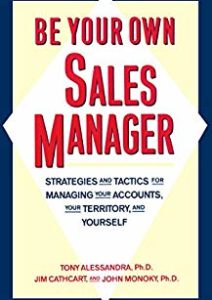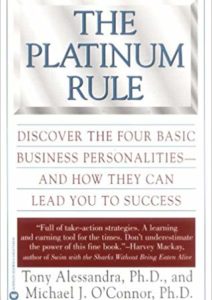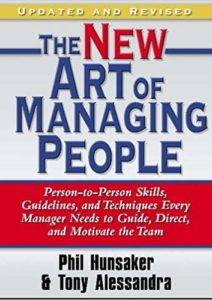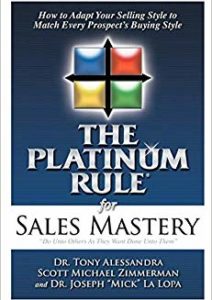No doubt, you have seen this quantum shift and its consequences in your industry: your competitors have increased in number and become more aggressive. Your products or services are more difficult to sell than in the past. It has become a challenge just to differentiate your company from your competitors, and price issues are a constant problem.
The upshot of these market influences is that the differentiated products of yesterday are the commodities of today. Instead of making differentiation easier, technology has made differentiation more difficult. Differentiation is, however, the only way to be successful in today’s market. Differentiation must come from quality, price, or service; and few companies can survive competing on price. This is a monumental challenge that every company faces. It is a challenge met by collaborative selling, a system in which salespeople can create differentiation and its accompanying competitive advantage every time they go after business.
The Fallacy of “Low Trust” Traditional Selling Techniques
The low trust approach to selling was largely developed after World War II. When the war ended, the demand for consumer goods shot up to an all-time high. Consumers were not very sophisticated, so selling techniques revolved around this typical scenario, which still exists today:
Low trust salespeople paid little attention to targeting their markets or planning their sales calls. They approached the market as a “numbers game,” delivered a canned pitch to as many prospects as possible in the shortest amount of time. Good salespeople began by breaking the ice with a little small talk (and equated small talk with relationship-building). Then they delivered razzle-dazzle pitches to wide-eyed, hopefully receptive prospects. There was little if any information gathering. Instead, the sales process focused on a persuasive pitch, manipulative closing techniques, and the salesperson’s skills in handling customer objections. Superstar salespeople were those who had mastered the art of arm-twisting.
The low trust sales pitch was, by necessity, generic. All of the product’s features and benefits had to be covered because salespeople had no way of knowing which features and benefits were relevant. It was a true shotgun approach in which salespeople tried to sell their products to every prospect, regardless of need. There was no follow-up after the sale. Traditional salespeople moved from one transaction to the next without looking back. Sales were perceived as one-shot deals.
Low Trust Selling is not dead. It is still used in some industries, such as used car sales and telephone “boiler rooms.” Despite the changes in the marketplace and their desperate need for differentiation, low trust, traditional salespeople are still insulting their customers with high-pressured, low trust tactics. They are short-term thinkers who must assume there is an endless supply of new customers.
Is this the basis for long-term relationships? Is this the formula for success? Certainly not. High trust companies are making customer satisfaction the focus of a full-scale makeover effort. Companies such as Nordstrom, L.L. Bean, Federal Express, and others discovered and implemented that years ago.
Low trust selling has another Achilles’ heel. It creates tension and could be construed as adversarial. Traditional salespeople often perceive their prospects as people with whom they must go to battle to win business. This power-struggle mindset is supported by sales trainers who teach manipulative sales technique and by books with combative titles such as Hard Ball Selling and The Sale Begins When The Customer Says No.
Unfortunately, many low trust sales training sessions address only the elements of razzle dazzle sales pitches, 101 closing techniques or overcoming objections at all costs. This traditional approach has created the negative stereotypes that exist today. This approach is “salesperson” rather than “customer” oriented and tends to foster an “I win, you lose” attitude on the part of the low trust seller. It does not take a genius to realize that the focus in low trust selling is misplaced and myopic. The commando approach to selling is obsolete. It does not foster referrals, references, repeat business, word-of-mouth advertising, customer satisfaction, or good will.
High Trust Selling
Another approach to sales exists and the high trust sales professional knows it. The underlying ethic for the High Trust Selling approach is that it’s not so much WHAT you do as HOW you do it. It’s not so much the business you are in as the WAY you are in business. The high trust salesperson utilizes a philosophy which guides every aspect of his or her behavior and which naturally extends into their work. The entire approach is based on “non manipulative” high trust behaviors that create win/win situations for both buyer and seller all the time, every time. The cornerstone of this approach is the salesperson’s desire to develop long term, high trust customer relationships rather than simply making one shot sales.
The high trust sales approach depends on several guiding principles:
- The sales process should be built around relationships that require openness and honesty on the part of both customer and salesperson.
- People buy services or products most often because they feel understood by the seller not because they were made to understand the product by an insistent salesperson.
- People strive for the right to make their own decisions, even if they are poor decisions. If YOU solve a problem for someone, they resent the solution. If you INFLICT the solution on them, they resent you, even if they accept the solution.
- If two people want to do business with each other, the details won’t stop it from happening. If two people DON’T want to do business together, the details won’t make it happen.
- It’s not what you do that makes you a professional. It’s HOW you do it.
- Prescription before diagnosis is malpractice. To paraphrase, presentation before information gathering is hucksterism.
High trust selling begins with a mindset of a commitment to the long-term. Today’s customers buy differently, so today’s salespeople must sell differently. Customers know there is no urgency to buy because good deals, good salespeople, and good companies come along every day. Price is less of an issue because buyers are not just interested in great deals; they want great relationships. Today’s customers are looking for measurable quality in the products and services they buy.
The transition to collaborative selling and the emphasis on long-term relationships is evident in the words and phrases that are used to describe modern buyer-seller relationships: strategic alliances, sustaining resources, single sources, integrity, values, and ethics. Today’s customers are looking for long-term relationships with suppliers who will be reliable resources over the long haul. In fact, many companies are awarding lifetime contracts to their supplier-partners. Collaborating companies are networking their computer systems to expedite order-entry, just-in-time inventory control, and electronic payment. Strategic alliance, partnering, collaboration call it what you want is taking place throughout the world on a macro level (industry to industry) and on a micro (salesperson to customer) level.
High trust selling means handling every aspect of the sales process with a high degree of professionalism. There are six basic steps that describe how the collaborative sales process unfolds:
Target. The first step is a marketing necessity: understand exactly what the product/service is and identify the specific markets that can best use it. This is done on a company level in their marketing plan and should be done by individual salespeople as well. It takes some time, but careful planning focuses effort and provides a greater return on time and money invested. High trust salespeople know they must concentrate on prospects who have a high probability of buying.
Contact. The first step after targeting a market is to contact them in a cost-effective and professional way. Naturally, this would be some combination of letter, phone, and personal contact. The right combination of contacting strategies ensures that collaborative salespeople create high-perceived value before they call on their prospects.
When contact is made, collaborative salespeople set the stage for a cooperative, working relationship. They convey their desire to explore needs and opportunities. They build credibility and trust. They express their sincere desire to be of service, and they make their competitive advantages known without jumping into a presentation.
Explore. In this stage of the collaborative sales process, salespeople convey the message: “Let’s explore your business situation to see if there are needs to fulfill or opportunities on which to capitalize.”
During the explore stage, collaborative salespeople conduct research, meet with their prospects frequently, and do whatever it takes to become an expert on their prospect’s business. The give-and-take relationship that develops sets the stage for in-depth exploration of options that may culminate in a sale. High trust salespeople make it clear that they want to help, not just make a sale. If, after information-gathering, collaborative salespeople find that their products are not appropriate for their prospects, which is unlikely due to their careful target marketing, they will forego the sale, but have made a friend and business contact. The Explore stage of selling, and in fact the entire high trust selling philosophy, is built around the following phrase–“Prescription Before Diagnosis is Malpractice”
Collaborate. It is at this point after an in-depth exploration of a prospect’s situation that collaborative salespeople talk about their products or services. Naturally, they are discussed in the context of prospects’ needs or opportunities.
High trust salespeople never dictate solutions to their prospects. Instead, they form “partnerships” in which prospects play an active role in the search for the best solution. The collaboration phase of the sale is conducted in the spirit of “let’s work together on the solution and together build a commitment to its successful implementation.” This team-approach to problem solving ensures that prospects will be committed to solutions. By making customers equal partners in problem solving, collaborative selling reduces or eliminates the risk that is inherent in the customer’s decision-making process.
Confirm. Keep in mind that, in every phase of the collaborative selling process, the salesperson and prospect have communicated well. High trust salespeople move on to the next phase of the sales process only after they have received assurances that their customers are in agreement with them on everything that has been discussed.
This agree-as-you-go process eliminates the need to “close” the sale or handle objections. Most objections have surfaced long before this point. If resistance does occur, the salesperson simply gathers more information or clarifies a detail.
With collaborative selling, the sale is a matter of when and not if. Confirming the sale is the logical conclusion to an on-going communication and problem-solving process. There is no need to “close” them. People commit when all their buying criteria are met!
Assure. This phase of the collaborative sales process begins immediately after the sale has been confirmed. High trust salespeople keep in touch after the sale. They communicate regularly about delivery dates, installation, training, and other relevant matters. They make sure their customers are satisfied with their purchases. They help customers track their results and analyze the effectiveness of the solution.
High trust selling is the key to differentiation on the micro level. It represents an obsession with quality and customer satisfaction. It reflects a high degree of professionalism and a primary focus on relationships rather than transactions. It is clear that collaborative selling is a mutual-win situation; one that provides increased security to both parties. This increased security is exactly what customers want and need, given the market changes that are occurring so rapidly.
High trust selling is a philosophy and practice that is being used today by enlightened salespeople; and it is clearly the sales process of the future. High trust selling helps professional salespeople build large, loyal customer bases that generate future sales, provide referrals, and act as lifetime annuities.
















Comments